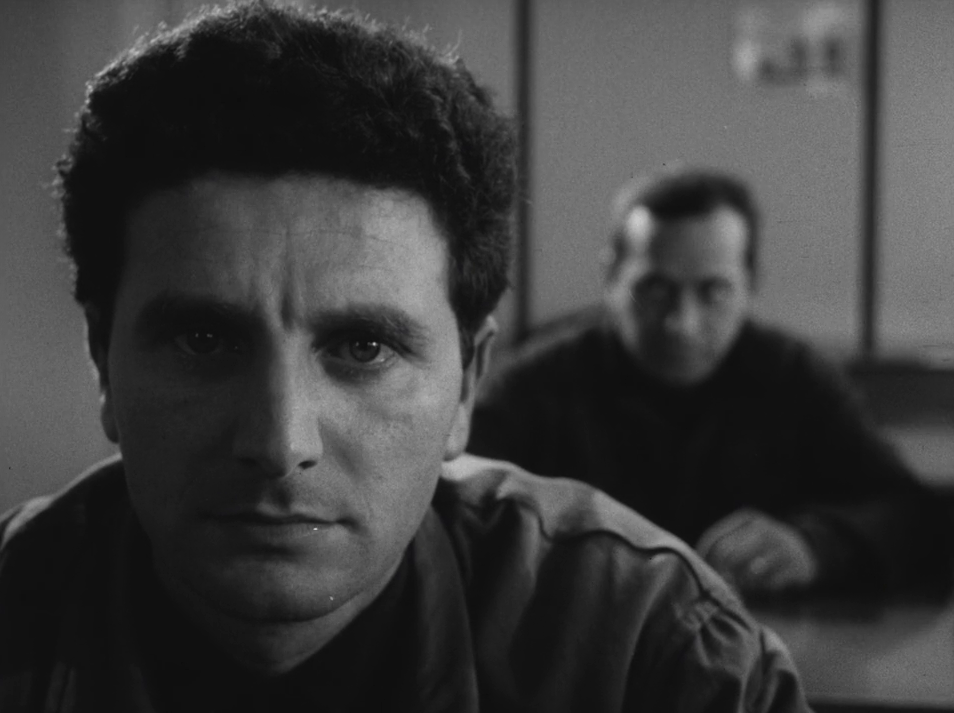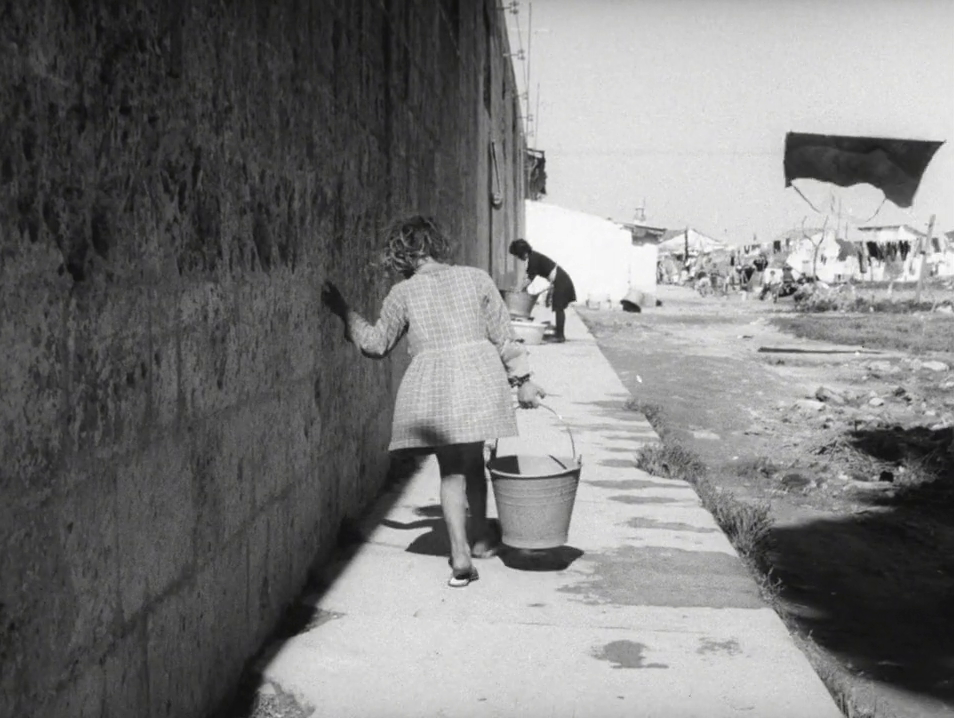“Documentary film is what ensures the survival of cinema”
Interview with Cecilia Mangini
In 2013 Cecilia Mangini, Italy’s first female documentary-maker of the postwar period, got behind the camera again after forty years of absence. She did so together with Mariangela Barbanente with In viaggio con Cecilia [My Travels with Cecilia] (2014), a feature-length film showing the dramatic consequences of the industrialization process – from the ’50s till today – in Puglia, her region of origin. We had the chance to interview Mangini at the screening of that film at the Cineteca di Bologna. Andrea Meneghelli, head of the Film Archive, and I, as curator of the Mangini Archive at the same Cineteca, had a long list of questions. We obviously wanted to know how she had made her films, but what really piqued our curiosity was how she had started, how her passion for cinema was born and how she was able to make her way in the world of cinema, at the time an almost exclusively male world.

Andrea Meneghelli: We know that one of the films that changed your life and prompted you to start a career as a filmmaker was Renoir’s La grande illusion.
Cecilia Mangini: Let’s go back in time. Let’s start from when I was in eighth or ninth grade, I can’t exactly remember the year. In school we had the Cineguf [Cinema Gruppi Universitari Fascisti, i.e., the Cinema Fascist University Groups] who gave us, young kids, the opportunity to attend their Sunday matinees for just two liras, I think... I went there, unbeknownst to my mother, saving on my lunch money. It was the only way to see films I would never have seen otherwise. The guys from Cineguf came every week to hang in the school hallway the big posters of the films scheduled for the following Sunday. One day we saw the poster of Le jour se lève with an awful, ugly face. The guy’s name was Jean Gabin. Bah, who was he?.... We didn't know. We knew from fascist propaganda that French cinema was responsible for corrupting emotions, mores, ideas and, on top of that, morality. So what did we do? We decided to act in a fascist way [fascisticamente]: we tore it down, made a ball of it and threw it in the heater. In its place, we wrote: “Help me! I’m in the heater! I’m burning!”.
Later I had a chance to see La grande illusion, and it was an exceptional occurrence since fascism had banned it in Italy and for a long time it had remained invisible. I was studying at a college in Switzerland and, having a free afternoon, I went to the movies.
I still felt, as I was taught, the necessity of going to film clubs. The necessity of cinema.
I saw the film and remained speechless... he was there again, the notorious Jean Gabin! When we burned his image, he had seemed dreadful to me. That was because in Italy we had the belli [handsome actors] like Massimo Girotti or Rossano Brazzi. He was not. But he was... well, he was a star. He had magnetism, a unique charisma. He just didn’t pierce the screen, he went through it from side to side!
And when I had the chance to watch it for a second time – I was in Rome then – I welcomed the occasion, with the addition that Renoir himself was there. And that’s what he said: “You believe that human society is vertically organized. It is not true. It is organized in a horizontal way, in layers”. The idea struck me and never abandoned me. I think it was a great help. Also, his direct and simple way of getting in touch with his audience was a great lesson.
![(2) Essere donne [Being Women] (Cecilia Mangini, 1965) (2) Essere donne [Being Women] (Cecilia Mangini, 1965)](/sites/default/files/Essere%20donne%207.png)
Michela Zegna: How did you end up as a documentary maker?
I don't know if what I’m going to say is the truth. You know, memory has many, complicated ways of tricking you. Sometimes you make something up and you don’t even realize you’re doing it. Sometimes you don’t recollect how things have gone but rather how you would have liked them to go. I don’t know... I think... maybe it was the fact that we had so few chances to see films that when we did it was a feast. Maybe that counted for something.
Maybe the revelation of Renoir’s great cinema when I was eighteen years old was the key. The idea of what cinema could tell people coming out of a global war.
Or the fact that, all of a sudden, this defeated Italy, so torn apart and full of ruins, could find again its identity through the films of De Sica and Rossellini. Those films gave us back an identity. After them, we could go back to being Italians. We could be sure we belonged to a community that had some measure of coherence. That was a fundamental turning point. I think it was the first time, at least in this country, that film played such a therapeutic role.
At the same time, at the end of the war, with those neorealist films that had triumphed even in the US... you know, things are never simple, they are pretty much complicated... we were obliged to see them... And it is fortunate that we did... Then new film clubs opened and I was a member of one of them in Florence. Once a week I went there. At the end of each screening we talked, we had debates, we learned how to share ideas. In two years I covered the masterpieces of half a century of cinema... yes, at the time, cinema was just fifty years old.
You cannot imagine how sensational it was to watch the arrival of the train into the station. Unforgettable! It was the first film ever and it was a documentary. Maybe that also counted for something.
Another film that changed my life was Dreyer’s La passion de Jeanne d’Arc and for a good reason! What you see... I don’t know... is something that stays with you. I mean, she’s not a saint and the film is not about religion; it’s about politics. It’s only apparently religious but it’s not. It’s profoundly secular. It’s a film that deals with what happens if your ideas aren’t in step with your time. That’s what happened to Joan of Arc.
Let’s see... the other milestones I went through... Another important film was Carné’s Les enfants du paradis. A wonderful film! It’s true, we later discovered that it was shot during the Nazi occupation... but I really don’t care! It’s a magnificent picture that has the breadth, you know, of a great novel.
Then came the Cold War... What does Cold War have anything to do with it? I’ll tell you. Along with the Cold War, the CIA came and broke everything up. Parties were broken, trade unions were broken, and also film clubs. The FICC [Federazione Italiana dei Circoli del Cinema, i.e., the Italian Film Clubs Federation], close to the Communist Party, split. Like in a war, if you stayed with the FICC you had no more access to the films held by Cineteca Nazionale [in Rome] and Cineteca Italiana [in Milan]. They only lent them to the UICC [Unione Italiana Circoli del Cinema, i.e., the Italian Film Clubs Union].
While our film club in Florence was trying to decide on which side to stand, I met Callisto Cosulich1 who was very close to the Communist Party and a true libertarian. He told me: “At the FICC we are looking for somebody to take charge of our programmes. Why don’t you come to Rome?”
I felt it as a sensational, amazing opportunity! I was to be involved with cinema all day long. I was to land in the real cinema! The year was 1952.
Meneghelli: You landed in the real cinema and became a documentarist. Was that your main aspiration or did you start with documentaries and then, for different reasons, never have the chance to turn to feature films?
I really don’t know if my aspiration to become a director of fiction films was unachievable and so I settled for documentaries or if I choose them after seeing some documentaries that greatly touched me, for instance Vigo’s À propos de Nice.
I don’t know if I lacked the courage to make a feature film or if I was genuinely attracted by the idea of recounting reality... because that’s the place where you get really close to people. What I was looking for was the cinema of the real, which has nothing to do with the cinema of reality, because the real is what underlies reality, it is what comes up when you succeed in explaining what happens beyond appearances.
Honestly, I couldn’t say. I’ll tell you the truth. I’d like to say that making documentaries was my main aspiration... I discovered later that documentaries are really the breathing core of cinema. Documentary film is what ensures the survival of cinema... its placenta, its umbilical cord. Even in time of crisis or decline, cinema can save itself if it has the strength to go back to documentary film.

- 1Callisto Cosulich, film critic and screenwriter, was elected general secretary of the FICC in 1950.
Images (1), (3): Brindisi ’65 (Cecilia Mangini, 1967)
Image (2): Essere donne [Being Women] (Cecilia Mangini, 1965)
Milestones: Cecilia Mangini takes place on Thursday 10 November 2022 at 20:30 in Beursschouwburg, Brussels. You can find more information on the event here.

